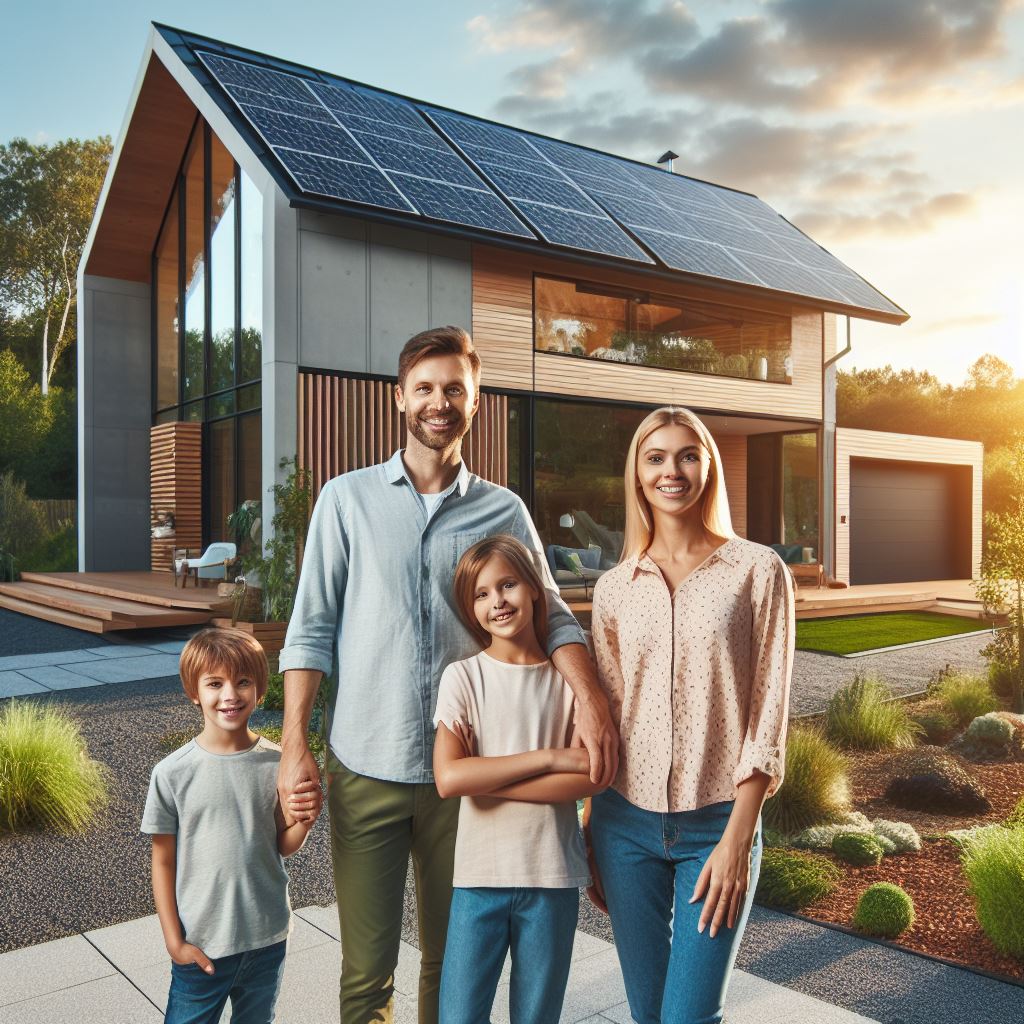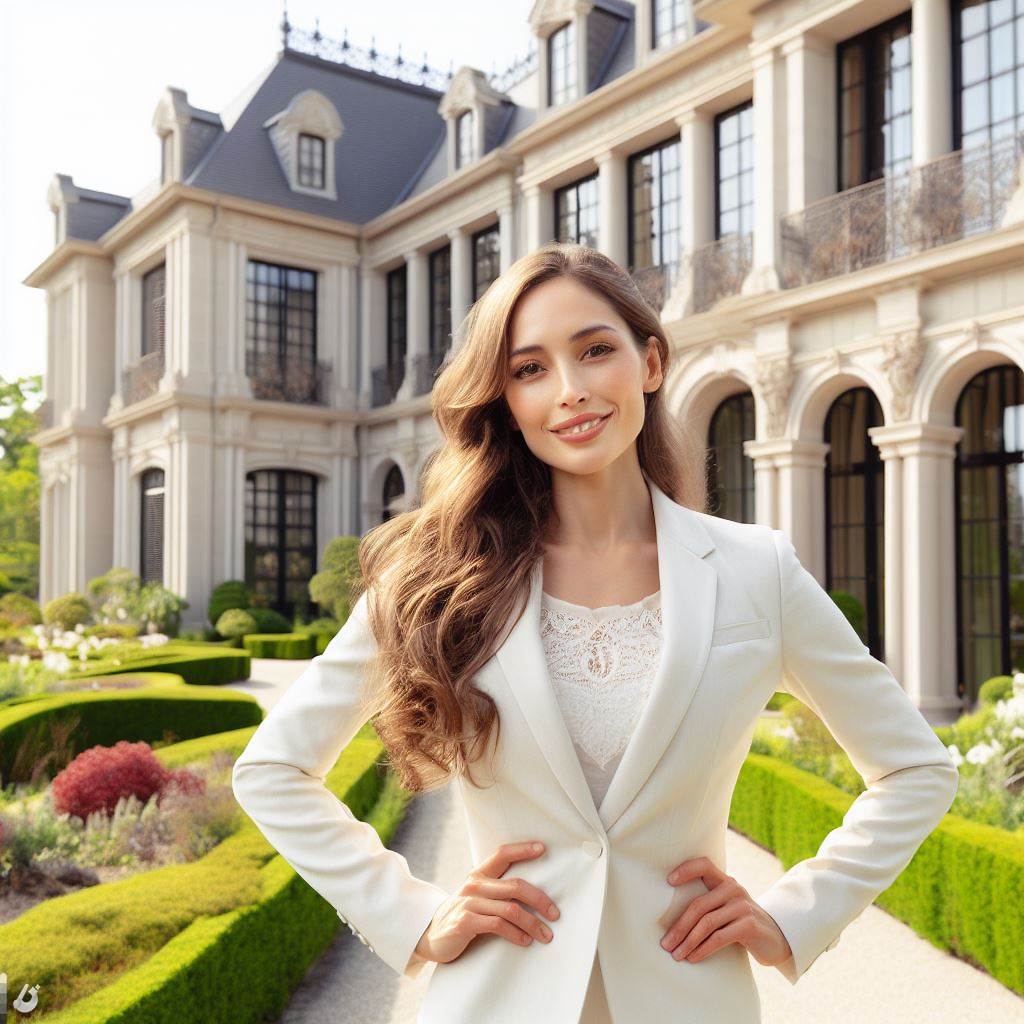Introduction
A. Define Eco-Friendly Luxury Homes
Eco-friendly luxury homes are residences designed with sustainable materials and energy-efficient features, blending opulence with environmental responsibility.
B. Growing Trend and Increased Demand
- Discerning Buyers: A surge in environmentally conscious consumers seeks luxurious yet eco-friendly abodes.
- Sustainable Features: Demand rises for homes with solar panels, rainwater harvesting, and energy-efficient appliances.
- Health and Wellness: The trend aligns with a preference for homes promoting healthier living, integrating nature with luxury.
In this section, we explore how the fusion of opulence and sustainability is reshaping the real estate landscape, meeting the desires of eco-conscious homebuyers.
Definition of Luxury in Eco-Friendly Homes
A. The shift towards sustainable and environmentally conscious living
In recent years, there has been a notable shift towards sustainable and environmentally conscious living.
This movement has extended to the realm of luxury homes as well.
Luxury no longer exclusively means opulence and extravagance, but also includes eco-friendly features that promote a greener way of living.
B. The importance of eco-friendly features in luxury homes
The importance of eco-friendly features in luxury homes cannot be overstated.
These features not only benefit the environment but also enhance the overall quality of life for homeowners.
Let’s delve into some of these features and discuss their significance.
C. Example
1. LEED certification
One example of an eco-friendly feature is LEED certification.
LEED stands for Leadership in Energy and Environmental Design and is a globally recognized symbol of sustainability achievement.
A luxury home with LEED certification signifies that it has been designed and built with a focus on energy efficiency, water conservation, and environmentally friendly materials.
2. Energy-efficient appliances
Energy-efficient appliances are another crucial aspect of eco-friendly luxury homes.
These appliances consume less electricity, reducing the carbon footprint of the household.
Additionally, they often come equipped with advanced features that optimize energy usage, further contributing to a more sustainable lifestyle.
3. Solar panels
Solar panels are rapidly gaining popularity in luxury homes.
These panels harness the power of the sun to generate electricity, reducing dependency on traditional energy sources.
Solar power is not only clean and renewable but also offers long-term cost savings by significantly lowering utility bills.
4. Water conservation
Water conservation is another vital consideration in eco-friendly luxury homes.
High-efficiency plumbing fixtures, such as low-flow toilets and showerheads, minimize water wastage without compromising performance or luxury.
Smart irrigation systems can also be incorporated to efficiently water landscapes while avoiding excessive water usage.
5. The use of sustainable building materials
The use of sustainable building materials is a hallmark of eco-friendly luxury homes.
Materials like reclaimed wood, bamboo flooring, and recycled glass countertops are not only environmentally friendly but also add a unique aesthetic appeal to the home.
These materials have a lower carbon footprint and assist in reducing deforestation and waste.
6. Incorporating natural cooling and heating systems
Furthermore, incorporating natural cooling and heating systems is essential in eco-friendly luxury homes.
Building designs that maximize natural ventilation and harness natural light help reduce the reliance on artificial cooling and lighting systems.
This approach not only saves energy but also promotes a healthier living environment.
7. Landscaping
Landscaping plays a significant role in eco-friendly luxury homes.
By utilizing native plants and drought-tolerant landscaping techniques, homeowners can minimize water usage and decrease the need for chemical fertilizers and pesticides.
Additionally, incorporating green roofs and living walls can enhance insulation, reduce stormwater runoff, and mitigate the urban heat island effect.
8. Implementing smart home technology
Implementing smart home technology is another way to enhance the eco-friendliness of luxury homes.
Smart thermostats, lighting systems, and automated controls allow homeowners to optimize energy usage and effortlessly manage their home’s environmental impact.
These technologies add convenience while simultaneously reducing energy waste.
To summarize, luxury homes are no longer solely defined by their opulence and extravagance.
The new trend in luxury homes is the integration of eco-friendly features that promote sustainable living.
From LEED certification to energy-efficient appliances, solar panels, and sustainable materials, these features prioritize the environment without compromising on comfort or style.
As more homeowners embrace the concept of eco-conscious living, eco-friendly luxury homes are set to become the new standard of luxury living.
Benefits of Eco-Friendly Luxury Homes
As the world becomes more conscious of the environmental impact of traditional luxury homes, the popularity of eco-friendly luxury homes has been on the rise.
These homes not only provide the desired luxurious lifestyle but also contribute to a greener and more sustainable future.
Here are some of the key benefits of investing in eco-friendly luxury homes:
A. Environmental sustainability and reduced carbon footprint
Eco-friendly luxury homes are built using sustainable materials and energy-efficient systems, minimizing the environmental impact and reducing carbon emissions.
Eco-friendly luxury homes prioritize sustainability by utilizing renewable resources, incorporating energy-efficient designs, and reducing waste.
These homes help minimize the carbon footprint and protect the environment for future generations.
B. Lower energy bills and long-term cost savings
These homes are designed to be energy-efficient, resulting in lower energy bills and significant long-term cost savings for homeowners.
With advanced insulation, efficient heating and cooling systems, and the use of renewable energy sources like solar panels, eco-friendly luxury homes significantly reduce energy consumption.
This translates into lower energy bills for homeowners and substantial long-term cost savings.
C. Healthier living environment with improved air quality
By incorporating green building techniques and materials, eco-friendly luxury homes offer improved indoor air quality, promoting better health and well-being for residents.
Green construction materials, such as low VOC paints and sustainable flooring options, are used in eco-friendly luxury homes.
These materials contribute to improved indoor air quality by reducing the release of harmful pollutants, creating a healthier living environment for occupants.
D. Enhanced resale value and marketability
The increasing demand for eco-friendly homes has created a market niche, making these properties more desirable and ultimately increasing their resale value.
As the world becomes more conscious of the environmental impact of traditional luxury homes, the popularity of eco-friendly luxury homes has been on the rise.
These homes not only provide the desired luxurious lifestyle but also contribute to a greener and more sustainable future.
As the demand for eco-friendly homes continues to grow, these properties have a competitive edge in the real estate market.
Buyers are increasingly looking for sustainable features, and investing in an eco-friendly luxury home can lead to higher resale value and faster property sales.
Beyond these specific benefits, eco-friendly luxury homes also contribute to a more sustainable housing industry as a whole.
By showcasing innovative design, sustainability features, and energy-efficient technologies, these homes inspire others to adopt eco-friendly practices and reduce their environmental impact.
Additionally, eco-friendly luxury homes often come with certifications such as LEED (Leadership in Energy and Environmental Design) or Energy Star, further validating their sustainability credentials.
These certifications provide confidence to buyers about the environmental performance and quality of the property.
All in all, eco-friendly luxury homes offer numerous benefits to homeowners, the environment, and the real estate market.
From reduced carbon footprint to long-term cost savings, improved air quality to increased marketability, these homes provide an attractive and sustainable solution for luxury living.
Investing in an eco-friendly luxury home not only aligns with the growing global focus on sustainability but also sets a higher standard for luxurious and responsible living.
Design and Construction Factors
A. Importance of architecture and design in eco-friendly luxury homes
The architecture and design of eco-friendly luxury homes play a crucial role in their overall sustainability.
Design and architecture are key factors in creating eco-friendly luxury homes that not only provide comfort and luxury but also minimize the environmental footprint.
The importance of architecture and design in these homes cannot be overstated, as they play a significant role in ensuring sustainability and energy efficiency.
B. Use of sustainable building materials and construction techniques
Eco-friendly luxury homes prioritize the use of sustainable building materials like recycled or renewable resources.
One of the primary considerations in the design and construction of eco-friendly luxury homes is the use of sustainable building materials and construction techniques.
These homes prioritize the use of materials that are recycled or renewable, reducing the demand for new resources and minimizing waste.
C. Incorporation of natural elements and biophilic design principles
Natural elements such as plants, natural lighting, and water features are integrated into the design to promote a connection with nature.
In addition to sustainable materials, the incorporation of natural elements and biophilic design principles is also crucial.
Biophilic design aims to create a strong connection between occupants and the natural environment.
It incorporates features such as plants, natural lighting, and water elements, which help create a sense of harmony and well-being.
D. Integration of smart home technology for energy management
Smart home technology enables homeowners to efficiently manage energy consumption and reduce their environmental impact.
Integrating smart home technology is another important aspect of the design and construction of eco-friendly luxury homes.
Smart home systems enable homeowners to monitor and control various aspects of their homes remotely, including energy management.
Energy-saving features such as programmable thermostats, smart lighting systems, and automated shading can significantly reduce energy consumption and lower the environmental impact.
Furthermore, the use of passive design strategies, such as strategic placement of windows, insulation, and natural ventilation, can greatly enhance the energy efficiency of eco-friendly luxury homes.
These design factors work together to minimize the need for artificial heating, cooling, and lighting, thus reducing energy consumption and operating costs.
When it comes to the design and construction of eco-friendly luxury homes, collaboration between architects, designers, and builders is essential.
It requires a holistic approach that considers the long-term sustainability and environmental impact of every aspect of the home.
Therefore, the design and construction factors play a crucial role in the creation of eco-friendly luxury homes.
The use of sustainable building materials, incorporation of natural elements, integration of smart home technology, and efficient design strategies are all key components in ensuring the sustainability and energy efficiency of these homes.
By prioritizing these factors, homeowners can enjoy the luxuries of a high-end property while minimizing their environmental footprint.
Read: Smart Tech in Luxury Homes: What’s New?
Amenities and Features
When it comes to eco-friendly luxury homes, it’s not just about being sustainable, but also about offering a range of luxurious amenities.
These homes combine the best of both worlds, providing owners with a high-end living experience while minimizing their environmental impact.
A. Sustainable Landscaping and Outdoor Spaces
One of the key features of eco-friendly luxury homes is their commitment to sustainable landscaping.
These properties often have beautifully designed gardens and outdoor spaces that use native plants, drip irrigation systems, and artificial turf to conserve water.
Additionally, they may have rooftop gardens or green walls that help insulate the home and reduce energy consumption.
B. Energy-Efficient Lighting and Appliances
To further reduce energy consumption, eco-friendly luxury homes are equipped with energy-efficient lighting and appliances.
LED lights are commonly used, as they consume less electricity and have a longer lifespan.
Additionally, these homes feature high-performance appliances that meet strict energy efficiency standards without compromising on style or functionality.
C. Advanced Water Conservation Systems
Water conservation is a top priority in eco-friendly luxury homes.
These properties are equipped with advanced water conservation systems such as rainwater harvesting, greywater recycling, and smart irrigation systems.
These technologies help minimize water wastage and ensure that water is used efficiently both indoors and outdoors.
D. Indoor Air Quality Management Systems
Eco-friendly luxury homes prioritize the health and well-being of their occupants by implementing indoor air quality management systems.
These homes have ventilation systems that filter and circulate fresh air, minimizing the presence of pollutants and allergens.
Additionally, they may use non-toxic building materials and paints to further enhance indoor air quality.
E. Home Automation for Efficient Energy Use
Efficient energy use is made easy in eco-friendly luxury homes through home automation systems.
These homes are equipped with smart thermostats, lighting controls, and energy monitoring systems, allowing owners to manage their energy consumption with ease.
By automating energy use, these homes optimize comfort while minimizing waste.
Living in an eco-friendly luxury home means enjoying the best amenities while being environmentally conscious.
The features and amenities offered in these homes not only enhance the living experience but also contribute to a sustainable future.
Read: Luxury Real Estate: Best Markets in the US

Case Studies and Examples
A. Successful eco-friendly luxury home projects that have implemented innovative design approaches and unique features
1. The Holzkern Residence
This eco-friendly luxury home in Austria showcases a combination of renewable energy sources such as solar panels, geothermal heating, and a rainwater collection system.
These features ensure a minimal carbon footprint and energy efficiency, reducing the homeowner’s reliance on the grid.
2. Villa Oceana
Located in California, this luxury home incorporates sustainable features like passive heating and cooling systems, energy-efficient appliances, and beautiful landscaping with native plants that require minimal water.
These design approaches help reduce energy consumption and preserve water resources, creating a comfortable living environment with a lower environmental impact.
3. The Green Sanctuary
Situated in Singapore, this eco-friendly luxury home stands as a model for sustainable urban living.
It utilizes green walls and rooftops, along with an efficient rainwater harvesting system, to enhance insulation and reduce heat gain.
The homeowners benefit from reduced energy costs and a better indoor environment, while contributing to the city’s overall green initiatives.
4. Casa Esencia
This luxurious residence in Mexico integrates cutting-edge green technologies to minimize its carbon footprint.
It incorporates a smart home system that optimizes energy usage, along with solar panels, recycled building materials, and a gray water recycling system.
The homeowners enjoy a comfortable living environment while leaving a minimal impact on the environment.
5. The Bayview House
Located in Australia, this eco-friendly luxury home showcases the use of sustainable materials like reclaimed timber and recycled glass.
It also utilizes advanced insulation techniques and energy-efficient appliances to reduce energy consumption. The homeowners experience a beautiful, modern living space while promoting resource conservation.
B. The unique features and innovative design approaches in these projects that contribute to their eco-friendly status
In each case study mentioned above, the eco-friendly luxury homes stand out due to their incorporation of unique features and innovative design approaches:
- The Holzkern Residence combines renewable energy sources and a rainwater collection system to ensure sustainability and reduce the home’s environmental impact.
- Villa Oceana showcases passive heating and cooling systems, energy-efficient appliances, and native landscaping for a lower carbon footprint and reduced water consumption.
- The Green Sanctuary utilizes green walls and rooftops for insulation and heat reduction, along with a rainwater harvesting system to support Singapore’s sustainable urban living goals.
- Casa Esencia integrates a smart home system, solar panels, recycled materials, and a gray water recycling system to optimize energy usage and minimize waste.
- The Bayview House demonstrates the use of sustainable materials and advanced insulation techniques, promoting resource conservation and energy efficiency.
C. The positive impact on homeowners and the environment from living in these eco-friendly luxury homes
The homeowners of these eco-friendly luxury homes experience numerous benefits, both for themselves and the environment:
- Reduced utility costs: By incorporating energy-efficient appliances, renewable energy sources, and sustainable design principles, homeowners can significantly lower their energy bills, contributing to long-term savings.
- Enhanced comfort: Innovative design approaches and thoughtful use of materials improve indoor air quality, regulate temperature, and create a comfortable living environment for the homeowners.
- Increased property value: Eco-friendly luxury homes have a higher market value due to their sustainable features and reduced operating costs, making them attractive investments.
- Healthier living spaces: Sustainable materials, green walls, and proper insulation help create a healthier indoor environment, reducing allergens and promoting overall well-being.
- Preservation of natural resources: By using renewable energy sources, implementing rainwater harvesting systems, and utilizing sustainable materials, these homes contribute to the conservation of natural resources and help combat climate change.
Most importantly, showcasing successful eco-friendly luxury home projects highlights innovative design approaches and unique features that benefit both homeowners and the environment.
These case studies exemplify the positive impact of living in eco-friendly luxury homes, including reduced utility costs, enhanced comfort, increased property value, healthier living spaces and the preservation of natural resources.
Embracing sustainability in luxury housing is not just a trend but a responsibility toward creating a greener future.
Read: Inside Celebrity Mansions: Luxury at Its Peak
Learn More: Innovative Design in High-End Properties
Overcoming Challenges and Obstacles
Designing and building eco-friendly luxury homes come with their fair share of challenges and obstacles.
However, with the right solutions and tips, these hurdles can be overcome.
A. Common Challenges in Designing and Building Eco-Friendly Luxury Homes
- Space Limitations: Eco-friendly features may require extra space for solar panels, rainwater collection systems, and insulation.
- Finding Sustainable Materials: Sourcing high-quality, sustainable materials that meet luxury standards can be a challenge.
- Integrating Technology: Incorporating energy-efficient technology seamlessly into the design can be complex.
- Balancing Aesthetics and Sustainability: Achieving a luxurious look while maintaining eco-friendly principles can be a delicate balance.
B. Addressing Cost Implications and Misconceptions
- Higher Initial Investment: Many assume that eco-friendly luxury homes are excessively expensive upfront, but long-term savings offset the initial costs.
- Lack of Awareness: Some homeowners are unaware that eco-friendly features can actually reduce energy bills and overall maintenance costs.
- Availability of Financing Options: Overcoming the misconception that financing eco-friendly homes is challenging by educating potential buyers about available options.
C. Solutions and Tips for Overcoming Obstacles
- Effective Space Utilization: Collaborate with architects and designers to creatively incorporate eco-friendly features without sacrificing luxury.
- Research and Collaboration: Engage professionals experienced in eco-friendly design to find the most sustainable and luxurious materials.
- Smart Home Automation: Utilize smart technology to efficiently control lighting, heating, and cooling systems while reducing energy consumption.
- Seek Expert Advice: Consult with green building experts who specialize in eco-friendly luxury homes to ensure the integration of sustainability and aesthetics.
- Educate Potential Buyers: Share success stories and provide clear information about the long-term cost savings and environmental benefits of eco-friendly features.
- Explore Financial Incentives: Inform potential buyers about government schemes, grants, and tax breaks available for eco-friendly home construction or retrofitting.
- Work with Eco-Friendly Builders: Partnering with builders who have a proven track record in constructing luxury eco-friendly homes can alleviate concerns.
In a nutshell, while designing and building eco-friendly luxury homes may present challenges and misconceptions, these obstacles can be overcome.
By addressing space limitations, sourcing sustainable materials, integrating technology, and finding the right balance between aesthetics and sustainability, homeowners can achieve their dream of a luxurious, eco-friendly home.
With education, collaboration, and the right professionals, eco-friendly luxury homes can become the new trend in sustainable living.
Read: 2024’s Top Luxury Home Features & Amenities
Conclusion
Eco-friendly luxury homes have a promising future with great growth potential.
As society becomes more environmentally conscious, the demand for sustainable and energy-efficient homes will only increase.
With advancements in technology and more availability of eco-friendly materials, the cost of building eco-friendly luxury homes is expected to decrease.
This will make it more accessible to a wider range of homeowners and investors.
The trend towards eco-friendly luxury homes offers numerous benefits, both for the homeowners and the environment.
By incorporating sustainable features, such as solar panels and energy-efficient appliances, homeowners can drastically reduce their energy consumption and save money on utility bills.
In addition to the financial benefits, eco-friendly luxury homes contribute to the overall well-being of their occupants.
These homes prioritize the use of low-toxicity materials and promote better indoor air quality, resulting in healthier living spaces.
The impact of green luxury homes extends beyond the individual homeowners.
By reducing the carbon footprint and conserving natural resources, these homes play a crucial role in promoting sustainable living and combating climate change.
In summary, the importance green luxury homes cannot be overstated. They offer a sustainable and luxurious living option for those who care about the environment and their own well-being.
As the trend continues to grow, it is essential for readers to consider the benefits of green luxury homes.
By embracing this trend, individuals can contribute to a greener future while enjoying the comfort and luxury they desire.
In a world where sustainability is becoming increasingly important, green luxury homes represent a significant step towards a more environmentally conscious society.
It is time for us all to embrace this trend and make a positive impact on our planet.




